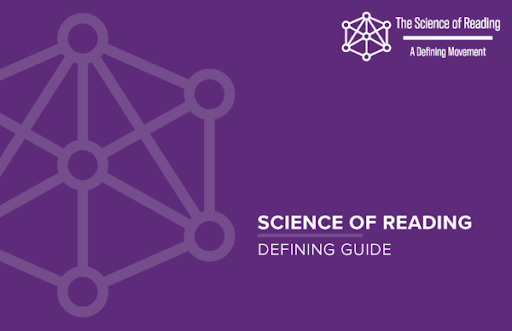Is there research that confirms the efficacy of pseudowords when used during reading instruction, not just for assessment?
That is the question we explore in this blog post—the sixth in our series Structured Literacy: Unpacking Nine Key Topics for Transforming Reading Instruction and Outcomes for Readers.

We’re grateful to our distinguished authors: Dr. Holly B. Lane, director of the University of Florida Literacy Institute (UFLI), and Linda Diamond, co-author of the Teaching Reading Sourcebook and a founder and past president of Consortium on Reaching Excellence in Education (CORE).
To catch up on earlier posts in the series, start with the introduction, “From Guided Reading to a Structured-Literacy Approach: My Journey as an Educator.”
Oscar Wilde, in The Importance of Being Earnest, wrote “The truth is rarely pure and never simple” (Wilde, 1898/1990, p. 10).
We can say the same thing about science. To arrive at absolute truth in science is rare because scientific knowledge constantly evolves, but we do know there are certain essential findings that constitute sufficient causal evidence to guide us to make decisions about health, the environment—and also about reading instruction.
The Importance of Evaluating Research
In reading instruction, educators want to know what practices they can trust that will improve reading outcomes. This means we want confirmed research that makes causal connections clear between “treatment practices” and the outcomes.
However, to understand statements of causal relationships for effective practices in reading research, we need to be certain of the methods used. Dr. Keith Stanovich explained that “the experimental method provides the critical support for making causal claims” (Stanovich, 2003).
So, what do we look for in evaluating research? The Science of Reading Defining Guide, recently released by the Reading League (2022), provides a detailed chart explaining each of the three important components one should look for in examining research studies:
1. A study design that is experimental or quasi-experimental. Experimental designs include random assignment to treatment and control groups; quasi-experimental designs do not use random assignment but participants are usually compared to groups with similar characteristics.
2. A detailed description of the methodology, the population, and any assessment instruments used. Detail is necessary for replication and generalizability because one study alone is not sufficient to have confidence in the findings.
3. Acceptance in a peer-reviewed journal. This last component is the quality check done by multiple, independent scientists well versed in the nature of the content of the study.

For a more complete description of these three components, download the Reading League’s Science of Reading: Defining Guide.
As reading educators, we often hear about inherently appealing ideas that sound promising but then turn out not to be supported by evidence. Examples include suggestive articles indicating the use of specialized fonts for children with dyslexia or special, colored lenses to improve reading. Despite numerous studies of their efficacy, neither of these approaches has been supported experimentally. Close reading, while emphasized in the Common Core State Standards, also has not been proven in empirical, peer-reviewed studies.
Many of us also remember the ubiquitous influence of learning styles that took hold in education despite the lack of any evidence to its effectiveness, and even after studies showed matching instruction to students’ learning styles did not improve reading outcomes. Just because a practice sounds good does not mean it is effective.
We have spent our careers dedicated to guiding teachers’ professional learning about reading—Linda as co-founder and past president of CORE and Holly as the founder of the University of Florida Literacy Institute. As a result, we have closely followed advances in reading science, and we’ve done our best to separate the effective from the simply appealing.
What Does the Research Say?
This brings us to the central question of this blog: Is there research that confirms the efficacy of pseudowords, which some refer to as nonwords, when used during instruction, not just for assessment?
The idea seems to make sense because if children can decode pseudowords, we can make the conclusion that they have developed grapheme-phoneme correspondences. Or can we?
Often pseudowords (or nonwords) and nonsense words are used interchangeably even though they are not quite the same. We define these terms as follows:
Pseudoword (or nonword): a string of letters that mimics a real word both orthographically and phonologically but is not a real, meaningful word that exists in the language (e.g. gom)
Nonsense word: orthographically and phonologically random and does not match known orthographic patterns (e.g. qif)
On January 27, 2022, during a webinar, “The Science of Reading and English Language Learners,” with colleagues Drs. Elsa Cárdenas-Hagan and Claude Goldenberg, Linda asserted with a high degree of certainty that while the use of pseudowords in assessment is well documented, using them in instruction is not.
Then Linda saw Holly’s comments on the utility of teaching with pseudowords on the “Science of Reading—What I Should Have Learned in College” Facebook group. She cited the findings from a dissertation study (Cardenas, 2009), in which phonics instruction that included the use of pseudowords turned out to be more effective than instruction with only real words.
Having read that dissertation, Linda wondered about the nature of the assessment used. If children were tested using only pseudowords in the measure then it would be a close measure of what was taught rather than a general measure of phonics skills.
One of Holly’s own doctoral students (Madsen, 2014) had conducted a similar study, building on Cardenas’s findings. Her study did not find significant differences between instruction with and without pseudowords, but the kids in both intervention groups did better than the controls.
Madsen drew on a theory called recombinative generalization. This is a linguistics concept, which suggests that learning is supported when language units are combined in novel arrangements. The idea is that using pseudowords gives students additional opportunities to practice with new grapheme-phoneme correspondences arranged in novel ways, so a student who has learned that m represents /m/, i represents /ĭ/, and p represents /p/, would benefit from the practice afforded by decoding the pseudowords “mip” and “pim.”
Another argument in favor of using pseudowords is that it can serve as practice for reading multisyllabic words, since most syllables are essentially pseudowords (e.g., tas, tic).
Reaching Out to the Research Community
After seeing Holly’s post, Linda proceeded to reach out to reliable and well-known experts in the science of reading research community to get a clearer picture of the use of pseudowords instructionally.
Not surprisingly, most responded by saying they knew of no confirming research to justify the use of pseudowords for instruction.

Dr. Wesley Hoover explained that a nonword (some use pseudoword and nonword interchangeably) is “a property of whether it is known by the person encountering it and not an exclusive property of the letter sequence encountered” (personal correspondence January 28, 2022).1 What this means is that when children are decoding words that are not in their vocabularies during phonics instruction, the word is a nonword to them.
Dr. Hoover went on further to explain that “in learning to read, set for variability is important.” Set for variability is the mental flexibility that allows a reader to discern the mismatch between a decoded word and its actual pronunciation. This is because a word may have multiple pronunciations, but having the word in a child’s vocabulary will facilitate correct pronunciation, which can lead to the ability to make other grapheme-phoneme correspondences and generalize to other words. Pseudowords, according to Dr. Hoover, do not necessarily afford this opportunity. Furthermore, Dr. Hoover indicated “in using real words teachers have the opportunity to advance competencies in both word recognition and language comprehension, the two critical components of reading comprehension” (personal correspondence January 31, 2022).

Dr. Claude Goldenberg, a prominent researcher on English language learners, pointed out that just because it may not be wrong to teach with pseudowords, it doesn’t mean it is helpful and may even be counterproductive in particular for English learners.
Dr. Elsa Cárdenas-Hagan, another prominent researcher focusing on English learners, is also concerned about using such words when teaching English learners who need to grow their English vocabularies.

Having heard all these counter arguments, Linda reached out to Dr. Linnea C. Ehri, because if anyone knows decoding instruction, it is Dr. Ehri.
Sure enough, she responded with two research studies. The most recent study with Brazilian students focused on decoding grapheme-phoneme subunits as well as two-letter CV pattern words of low frequency and missing diacritics (Sargiani, Ehri & Maluf, 2021). In addition, in an earlier study, Dr. Ehri used pseudowords in instructing young children and found positive effects (Ehri & Wilce, 1987).

Dr. Ehri generously sent Linda a set of real words and pseudowords by way of example when training children to practice reading units composed of CVCs: “bat, bet, bit, bot, but, tab, teb, tib, tob, tub.” Meanings were not included in this type of set; instead, the purpose focused on processing grapheme-phonemes “to map spellings to pronunciations” (Personal correspondence January 31, 2022).
However, Dr. Ehri also stated that when the central purpose is to connect meanings to spellings and pronunciation, it is not necessarily appropriate to include pseudowords. Furthermore, in the earlier 1987 study, Ehri and Wilce stated the following:
Although our training method worked with a number of kindergarteners, it may not be the best way of designing instruction. Rehearsing nonsense syllables over and over is boring and tedious, especially for young children. Our method was selected mainly for experimental purposes. More interesting ways of teaching deciphering skill need to be identified and evaluated for their effectiveness. (p. 12)

Dr. Tim Odegard at Middle Tennessee State University’s Tennessee Center for the Study and Treatment of Dyslexia also concurred with Dr. Ehri but with a caveat. Dr. Odegard explained that the need for pseudowords is “born out of the necessity for readers who need a lot of repetitions to consolidate learning.” However, he went on to say with regard to English learners, “not all ELL students will require as much practice as others. The rate of learning and the need for considerable practice to consolidate learning is an individual difference” (personal correspondence January 31, 2022). At his center, the goal is to have children learn to read with real words.
From a practical consideration, mixing real words with pseudowords could provide extra practice with grapheme-phoneme decoding while children are progressing to the point when many more words become available for decoding practice. Dr. Odegard indicated that too often children do not get sufficient practice decoding so adding pseudowords could augment the real words. Thus, from a design standpoint, there is logic to this approach. However, when children are reading words in sentences and in decodable or connected texts, which should be a regular part of decoding instruction, using real words is preferred. Furthermore, more time reading texts and more interleaving (mixed practice) as children learn more grapheme-phoneme correspondences may resolve the sufficiency of practice concern.

Dr. Stephanie Stollar recently published a blog post about the use of pseudowords in assessment. In it, she cautioned against using them in instruction. She said, “The instant word recognition required for reading comprehension depends on the synthesis of graphemes, phonemes, and word meanings. Instruction that uses nonwords works against this goal.”
Dr. Stollar goes on to suggest that assessing English learners with pseudowords is appropriate because “for students to become accurate and fluent readers of English, an underlying awareness of the phonics structure of English words is necessary in order to apply word attack skills when encountering unfamiliar words in text.”
Further Research Needed
It would be worthwhile to see a study examining instruction using pseudowords compared to instruction using real words, both with and without increased connected text reading. Some curricula, such as SIPPS and Being a Reader, to name two, provide a large amount of practice with words, sentences, and encoding and reading connected texts, but also provide work with syllable parts (see the SIPPS Challenge Level Scope and Sequence) that are themselves pseudowords (e.g., mem or ber from remember).
Until further peer-reviewed research is conducted, we may not have a complete answer to the appropriate use of pseudowords in instruction. But Dr. Ehri’s cautionary conclusion—that it depends on purpose—makes the most sense.
Finally, one consideration is the tyranny of time. Schools have limited time with children and what time does exist for literacy should include both developing automaticity with word recognition and the development of strong language comprehension, including vocabulary knowledge, oral language and background knowledge.
If we want children to improve both word recognition and language comprehension, we should maximize the instructional time that produces both outcomes. This alone is an argument to teach decoding as much as possible with real words, assess using pseudowords, and ensure application to texts to acquire the meanings of the words. In this way, children will bond grapheme-phonemes correspondences to spellings and to meanings for later automatic retrieval.
Unlike the prior examples about specialized fonts, colored lenses, and learning styles, which have been disproven by reliable research studies, the use of pseudowords in teaching reading will benefit from further research. Since this idea has taken hold, especially in some circles for children with dyslexia, more complete peer-reviewed studies could either advance or dispel the use of this practice except in certain situations.
Reflecting on the Importance of Being Earnest about the Science of Reading
This exchange about pseudowords reminds us to be cautious in asserting something with certainty before we have exhausted as much research as possible. To address this topic carefully, we followed the guidance provided in the Science of Reading Defining Guide by the Reading League (2022):
- Disagree respectfully
- Identify best practices from multiple studies
- Dig deeper and seek clarification
- Have courage to reconsider
Holly’s post started Linda down this path of exploration and once she read Dr. Ehri’s studies, the use of pseudowords, with cautions, can make sense. It’s important to take into account what Dr. Hoover and Dr. Odegard said, in particular because we have the urgent job of helping children become both automatic with word recognition and build their language comprehension as well.
We are also mindful of what Dr. Cardenas-Hagan and Dr. Goldenberg have said, and the importance for English learners to have enough English words in their oral vocabularies to be able to bond the spellings to the pronunciations and to meanings.
Finally, we are incredibly grateful to Dr. Ehri who responded to multiple emailed questions in order to provide clarity and nuance to this discussion.
We are all still on a journey, and to paraphrase Algernon in The Importance of Being Earnest when he explained further why the truth is “rarely pure and never simple”: “Modern life would be very tedious if it were either, and modern [science] a complete impossibility.”2
***
For more information about Dr. Wesley Hoover, see research on the Simple View of Reading and Hoover WA, Tunmer WE. The Simple View of Reading: Three Assessments of Its Adequacy. Remedial and Special Education. 2018;39(5):304-312. doi:10.1177/0741932518773154
The actual quote by Algernon is “The truth is rarely pure and never simple. Modern life would be very tedious if it were either, and modern literature a complete impossibility!” It can be found in Act 1, page 10.
***
To learn more about this Collaborative Classroom blog series, Structured Literacy: Unpacking Nine Key Topics for Transforming Reading Instruction and Outcomes for Readers, read the introduction.
***
Footnotes
- For more information about Dr. Wesley Hoover, see research on the Simple View of Reading and Hoover WA, Tunmer WE. The Simple View of Reading: Three Assessments of Its Adequacy. Remedial and Special Education. 2018;39(5):304-312. doi:10.1177/0741932518773154
- The actual quote by Algernon is “The truth is rarely pure and never simple. Modern life would be very tedious if it were either, and modern literature a complete impossibility!” It can be found in Act 1, page 10.
References
Cardenas, Jessica M. (2009). Phonics instruction using pseudowords for success in phonetic decoding. [Doctoral Dissertation, Florida International University]. FIU Electronic Theses and Dissertations. Retrieved from https://digitalcommons.fiu.edu/etd/139.
Ehri, L. C., & Wilce, L. S. (1987). Cipher versus cue reading: An experiment in decoding acquisition. Journal of Educational Psychology, 79(1), 3–13. Retrieved from https://doi.org/10.1037/0022-0663.79.1.3
Madsen, K. M. (2014). The use of pseudowords for decoding instruction. [Doctoral dissertation, University of Florida]. UF Digital Collections. Retrieved from https://ufdcimages.uflib.ufl.edu/UF/E0/04/59/36/00001/MADSEN_K.pdf.
Sargiani, R. de A., Ehri, L. C., & Maluf, M. R. (2021). Teaching beginners to decode consonant–vowel syllables using grapheme–phoneme subunits facilitates reading and spelling as compared with teaching whole‐syllable decoding. Reading Research Quarterly, 57(2), 629–648. Retrieved from doi:10.1002/rrq.432.
Stanovich, P. J. & Stanovich, K. E. (2003). Using research and reason in education: How teachers can use scientifically based research to make curricular & instructional decisions. National Institute of Child Health and Human Development; Department of Education; and Department of Health and Human Services. Retrieved from https://files.eric.ed.gov/fulltext/ED482973.pdf.
Stollar, S. (2022, Mar 23). Do we stop making sense when we assess with nonsense words? Retrieved from https://www.readingscienceacademy.com/blog/.
The Reading League. (2022). Science of reading: defining guide. Retrieved from https://www.thereadingleague.org/what-is-the-science-of-reading/.
Wilde, O. (1990). The Importance of Being Earnest. Dover Publications. (Original work published 1898.)
